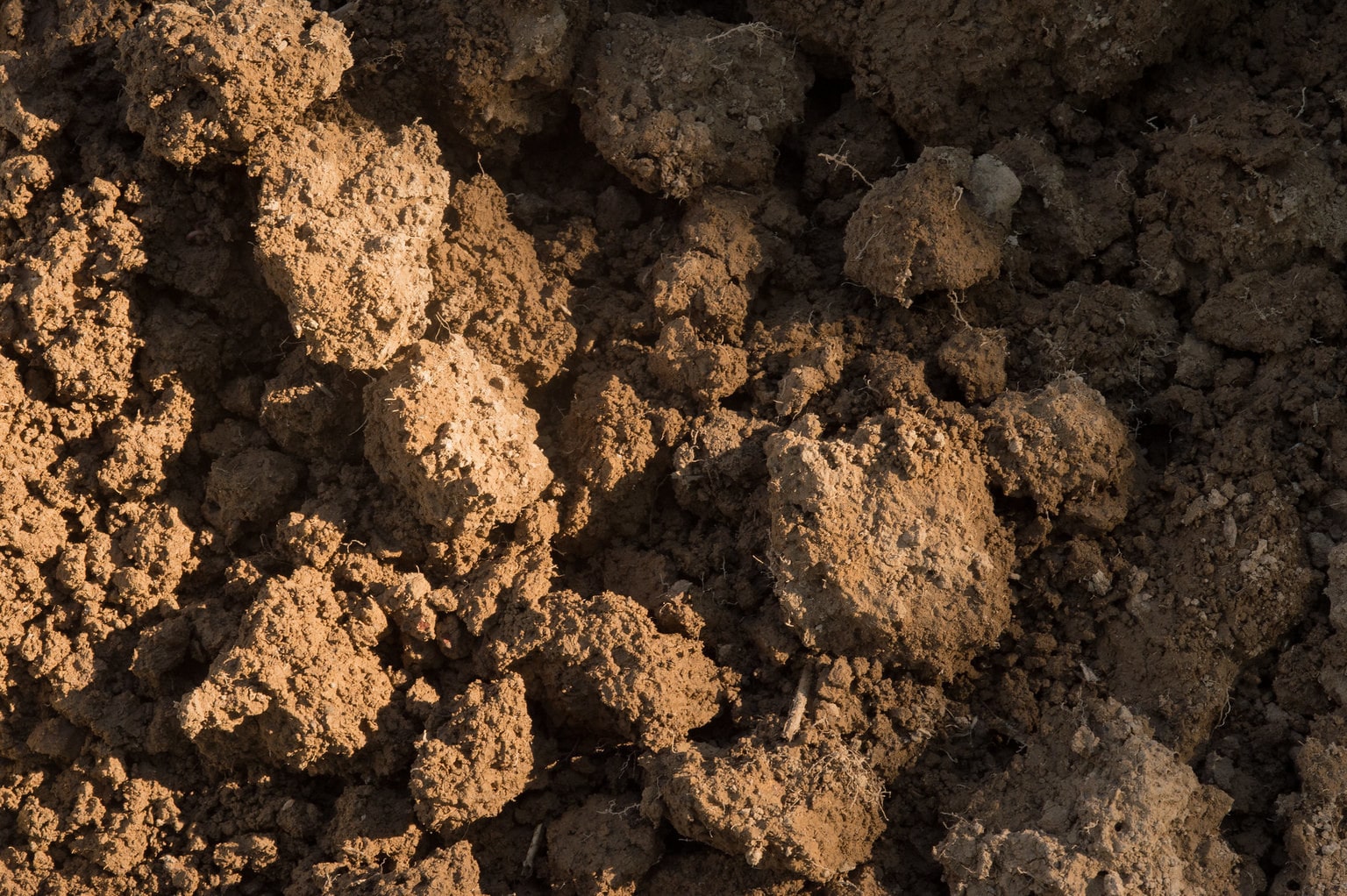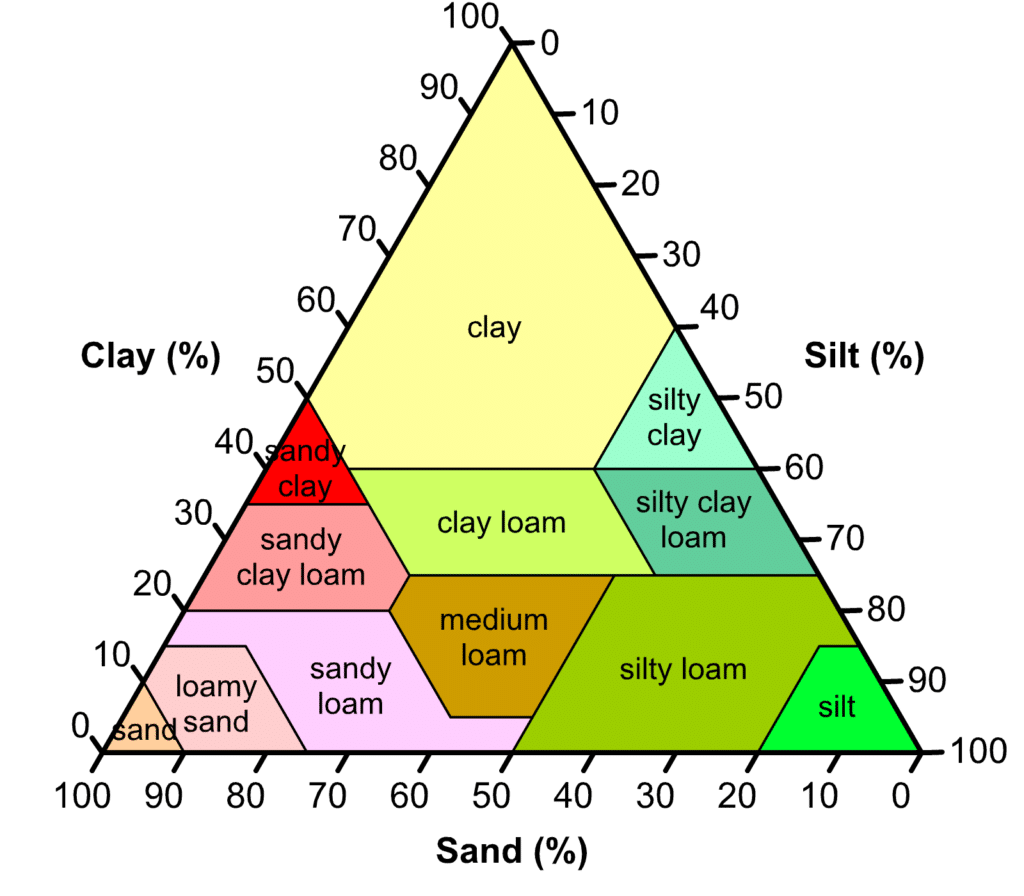by Amanda Shiffler |
 |
Dirt is dirt, right? It gets under your nails, it gets tracked into your house and it creates a lot of laundry if you have young children. Most people don’t give topsoil a second thought other than to grumble about the mess it makes. |
But your soil deserves respect. It serves a vital purpose. It gives plants, trees and grass a place to put their roots and there are many different types of soil. As a homeowner, understanding the soil you have in your yard can really help you with your gardening, landscaping and lawn care.
If you know your soil type and how it acts under different conditions, you can amend or manage it so your grass and other plants have enough air, water and nutrient movement through the root zone. Probably as clear as mud, but keep on reading to get a better understanding!
What Is Soil?
According to the Oxford Dictionary, soil is “the upper layer of earth in which plants grow, a black or dark brown material typically consisting of a mixture of organic remains, clay, and rock particles.”
More simply, soil is a mixture of weathered rock, minerals, and organic materials originating from living organisms. Over time it has slowly built up layers that cover the surface of the earth, serving as a medium for vegetative growth.
Farmers and engineers have closely studied the native topsoil they are working with to determine its composition and structure This gives them insight into how a specific soil type will behave. While you don’t need to study your soil as closely as a soybean farmer, having a basic understanding of what’s under your feet will help you achieve a healthy soil — and grow healthy plants in it.
Soil Types, Textures
Soil is made up three different types of particles that are classified based upon their size: sand, silt, and clay. This combination/ratio of particle sizes makes up what we know as the texture of the soil. The texture determines how soil looks and feels.
The textural class of soil is determined by the relative amounts of sand, silt, and clay it contains. For grass and most other plants, a medium loam, with proportions (by weight) of 40% sand, 40% silt and 20% clay is the ideal growing material. That mix holds nutrients and moisture but lets excess water run through.
3 Ways to Determine Your Soil Texture
There are numerous ways to determine your soil texture, ranging from simple methods you can DIY at home to laboratory tests that you will need to pay for.
1. Watch the Water
Look at the physical characteristics of your soil, especially anything that stands out as being abnormal. These physical signs can provide some clues to the soil texture.
-
- Does water drain quickly through the soil after irrigating or a natural rainfall event? If so, it has a higher sand content.
- Does water pool on the surface of the soil after irrigating or a natural rainfall event? If so, it has a higher clay content.
- Does the soil develop big cracks when it dries out? If so, it has a higher clay content.
- Does the soil feel gritty and course in your hands? If so, it has a higher sand content. If so, it has a higher sand content.
2. Dig Your FIngers in
You can get an approximate determination of the soil texture by following what is known as the soil texture by feel and “soil ribbon” technique. The directions are more in-depth but the overall idea is you create a ball of moist soil in your hand and by following a flow chart of simple questions you can determine the textural classification. (On a side note, this was one of my favorite tests to perform when I was classifying soils as a graduate agronomy student! Who doesn’t like to play with mud?)
3. Try a Pro Soil Test
A professional soil test performed by a laboratory is the most accurate method, but the most expensive. The common method employed by many soil testing labs uses a hydrometer for particle size analysis of a soil sample. A slurry of sorts is made to disperse the soil particles and then poured into tall glass tubes. Based upon their size, particles will fall out of suspension at different rates. Measurements are taken at specific times to determine the amount of sand, silt, and clay in the sample; the texture can then be determined based upon the soil texture triangle.
What the Best Lawn Soils Need
Besides the correct amount of sunlight, water, and essential nutrients, your grass needs optimum soil conditions for good growth. This means both good texture and good structure.
Good soil conditions favor a strong root system, nutrient retention, adequate moisture retention, drainage of excess water, pockets for aeration, and populations of beneficial microorganisms. When given good soil texture and structure to favor all of those aspects, your grass has all the resources it needs to thrive.
Now the question is, how do I get this ideal soil for my lawn? This is where achieving friable loaminess comes into play.
I’m not talking fryable as in french fries or chicken-fried steak. The term friable means the tendency of a substance to crumble easily. Friable soil has a crumbly structure ideal for the underground activity that goes along with plant growth; it is characterized by larger clods that break easily and smaller soil aggregates being harder to break.
As you can see from the textural triangle below, loam is a type of soil texture. It contains relatively balanced amounts of sand, silt, and clay. The ideal soil, friable and loamy, reaps the benefits of each different soil type with few of their drawbacks.

Soil Testing at Kynocks
Several times a year Kynock Resources samples its soils and send to third party testers such as the Agricultural College of Nova Scotia, EnGlobe and StanTec. We test for nutritional value as well as the partical distribution. This is performed for both our Premium Organic Lawn Soil and our Premium Triple Mix Organic Garden Soil